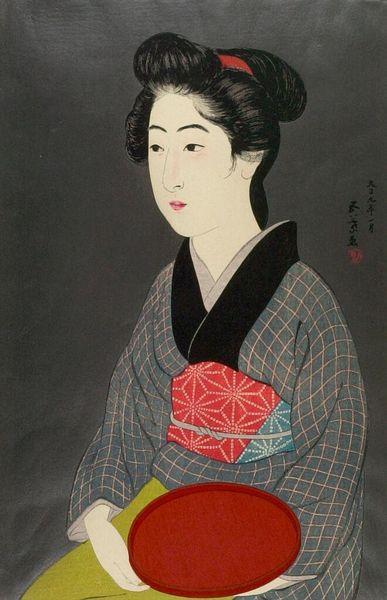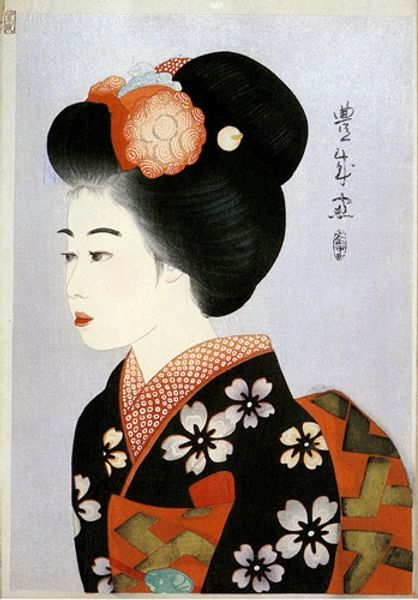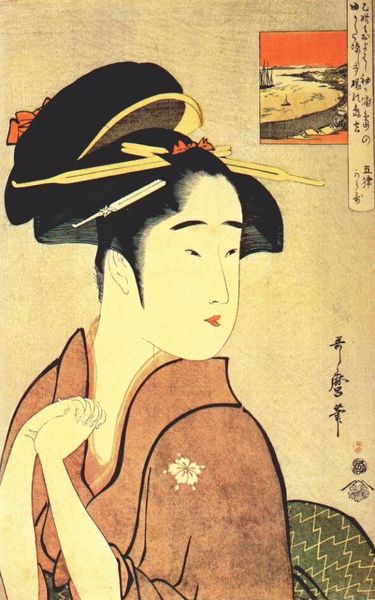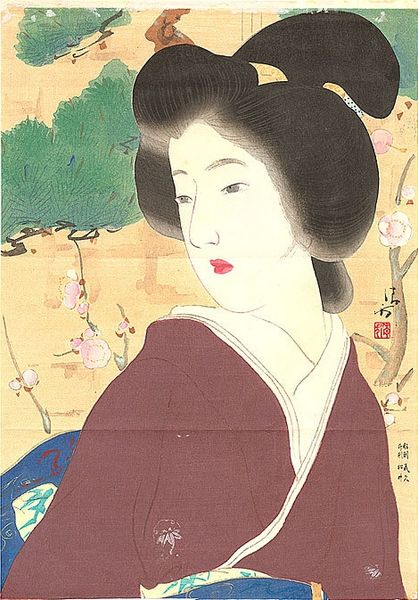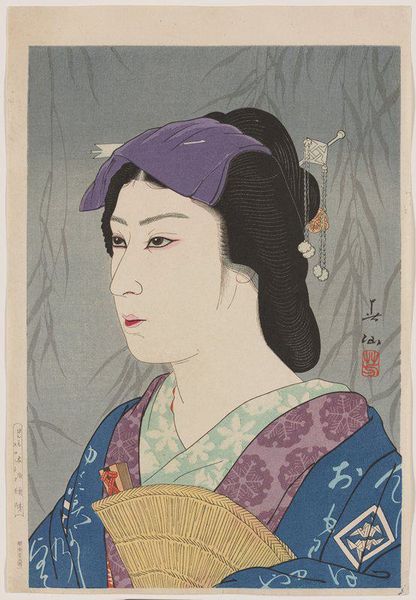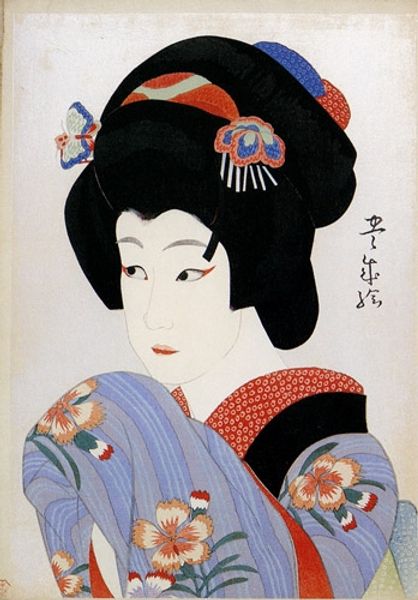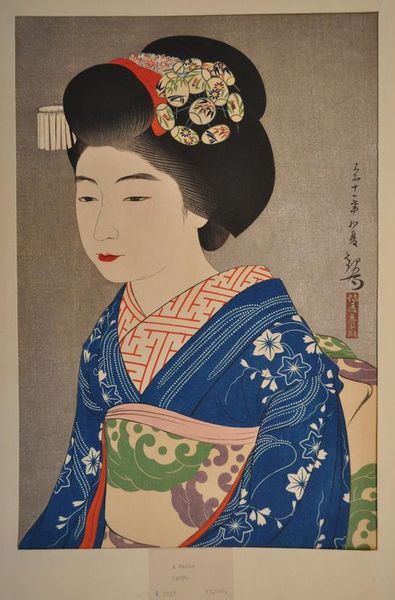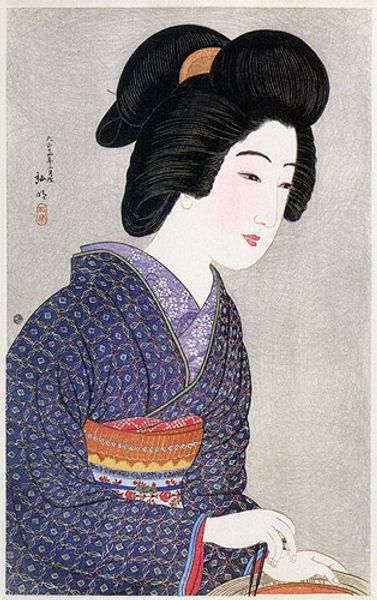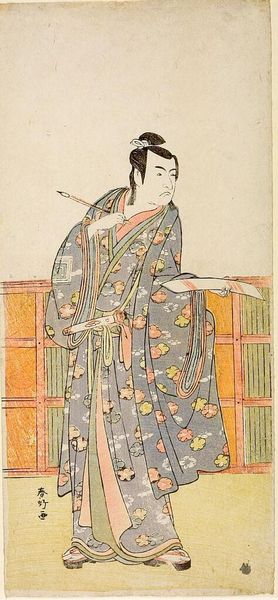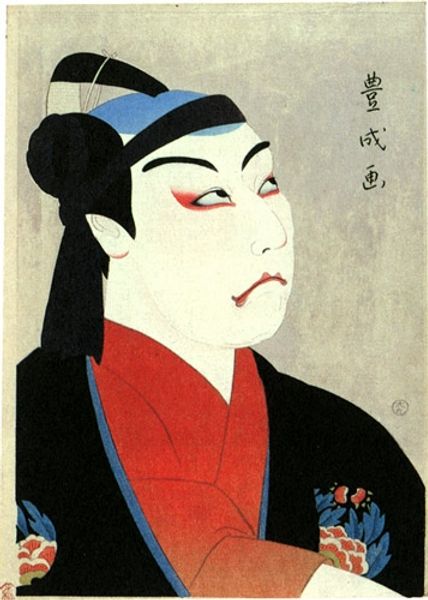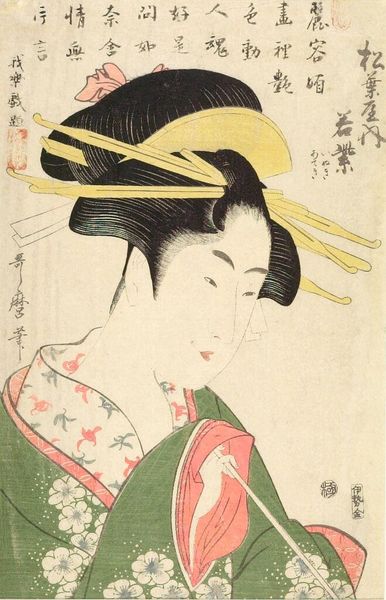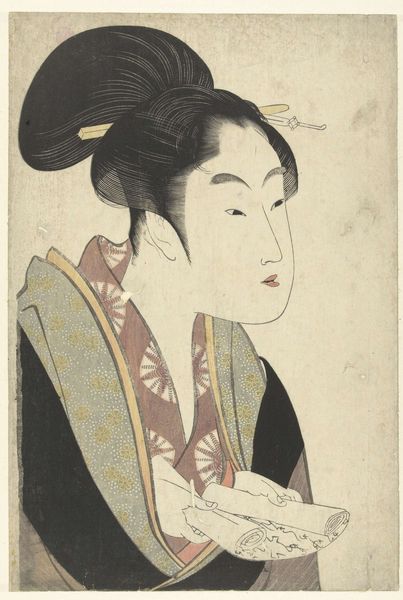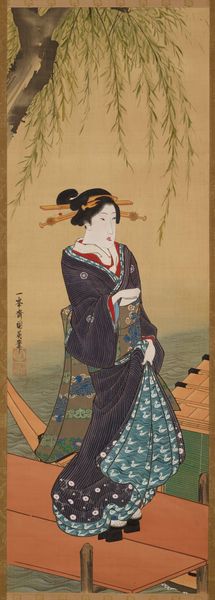
Copyright: Public domain
Curator: This woodcut print from 1920 is entitled "Woman Holding Tray" and it's by Goyo Hashiguchi, a notable figure in the Shin-hanga movement. Editor: The muted tones are lovely. And she's got an exquisite face, but her stance is…rigid. There's something intensely controlled about this composition. Curator: Well, that control speaks to the Ukiyo-e tradition Hashiguchi draws from, even as he modernizes it. Think about the role of women, especially geisha, as both performers and commodities in that society. It’s a fascinating reflection of early 20th century Japan. Editor: Right, but focusing on the craft, look at how the printmaking emphasizes the flatness. No attempt to hide the process here! Also notice the woman's kimono fabric. A relatively modern, and complex pattern on the cloth indicates it wasn't simply painted with brush, but instead block printed. The whole presentation reveals labor and industrialization. Curator: That tension between tradition and modernity is key. Shin-hanga aimed to revitalize traditional woodblock printing, but catering to a Western audience that often exoticized Japanese culture. You see a dialogue happening, both East meets West and tradition adapts to a modernizing Japan. The commodification of Japanese artistry in international markets also supported artistic developments. Editor: So, you see the historical commodification influencing both style and execution! I see it too, as the hand-printing elevates these items from craft into collectible art objects which both support the artists as workers and creates new wealthy markets for this sort of presentation. Curator: Exactly! These prints served as important cultural ambassadors, conveying specific idealized imagery abroad while impacting views and marketing back home. Editor: Looking at this portrait I’m drawn to the dialogue between intention and marketability and, of course, labor of printmaking that creates an aesthetically stunning piece, imbued with social narratives that resonate through both eras. Curator: Indeed. It makes you consider the shifting sands of history and the multifaceted nature of representation itself.
Comments
No comments
Be the first to comment and join the conversation on the ultimate creative platform.
